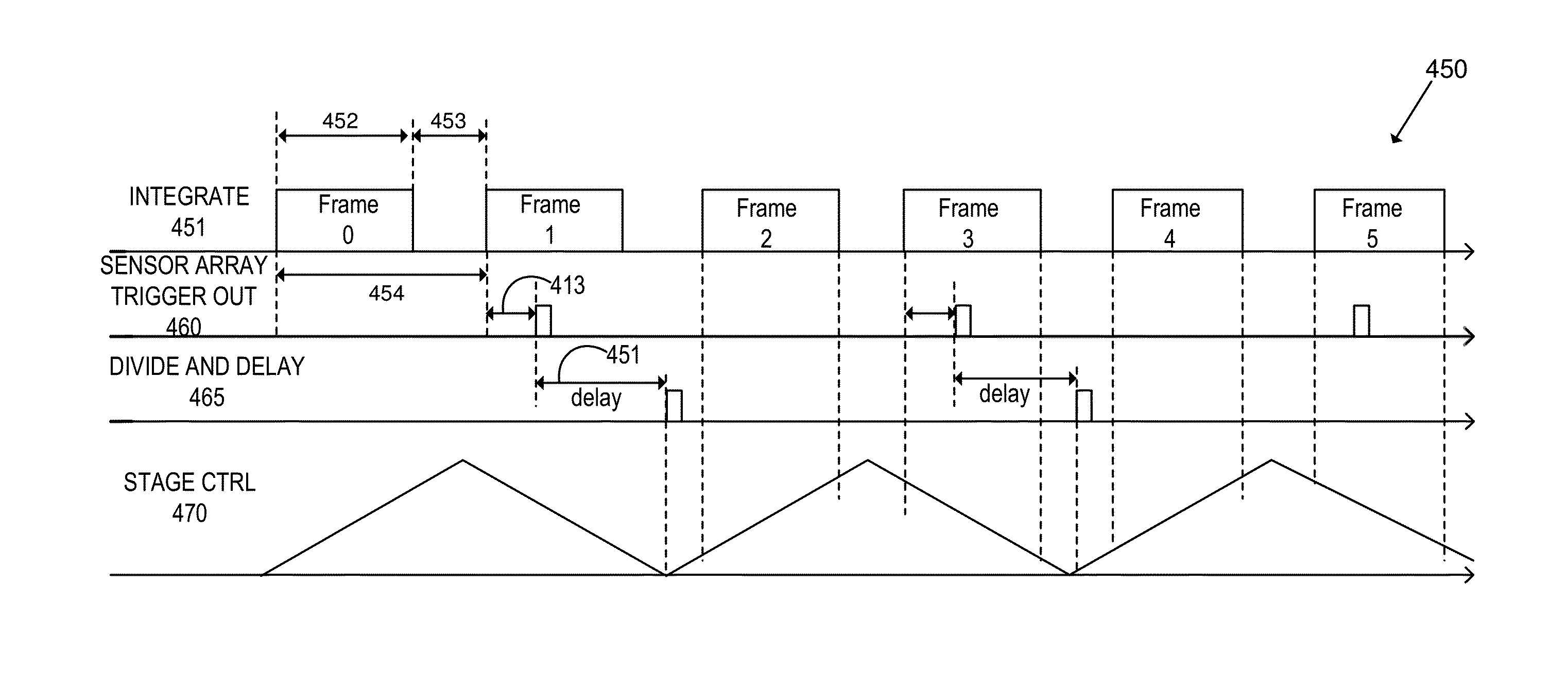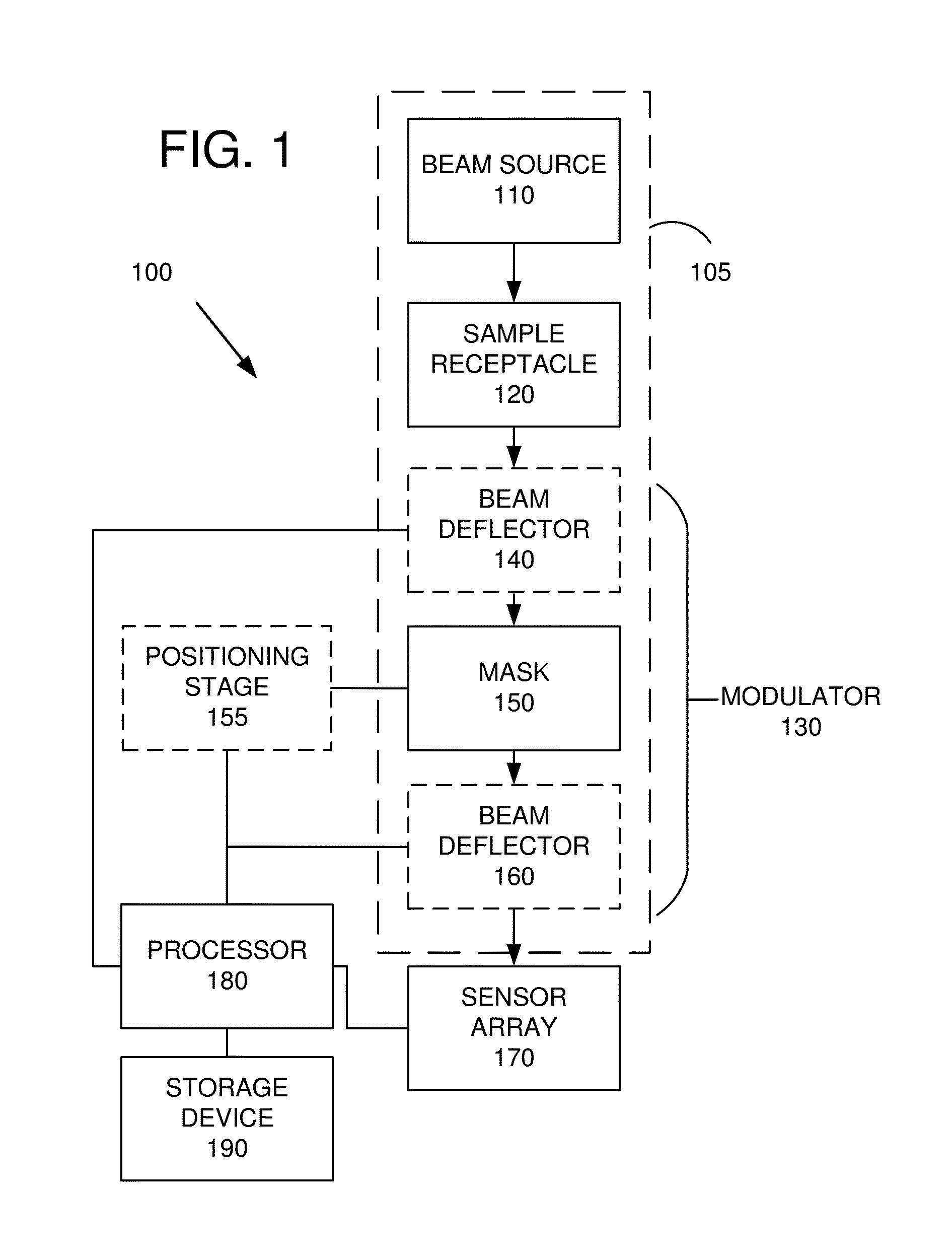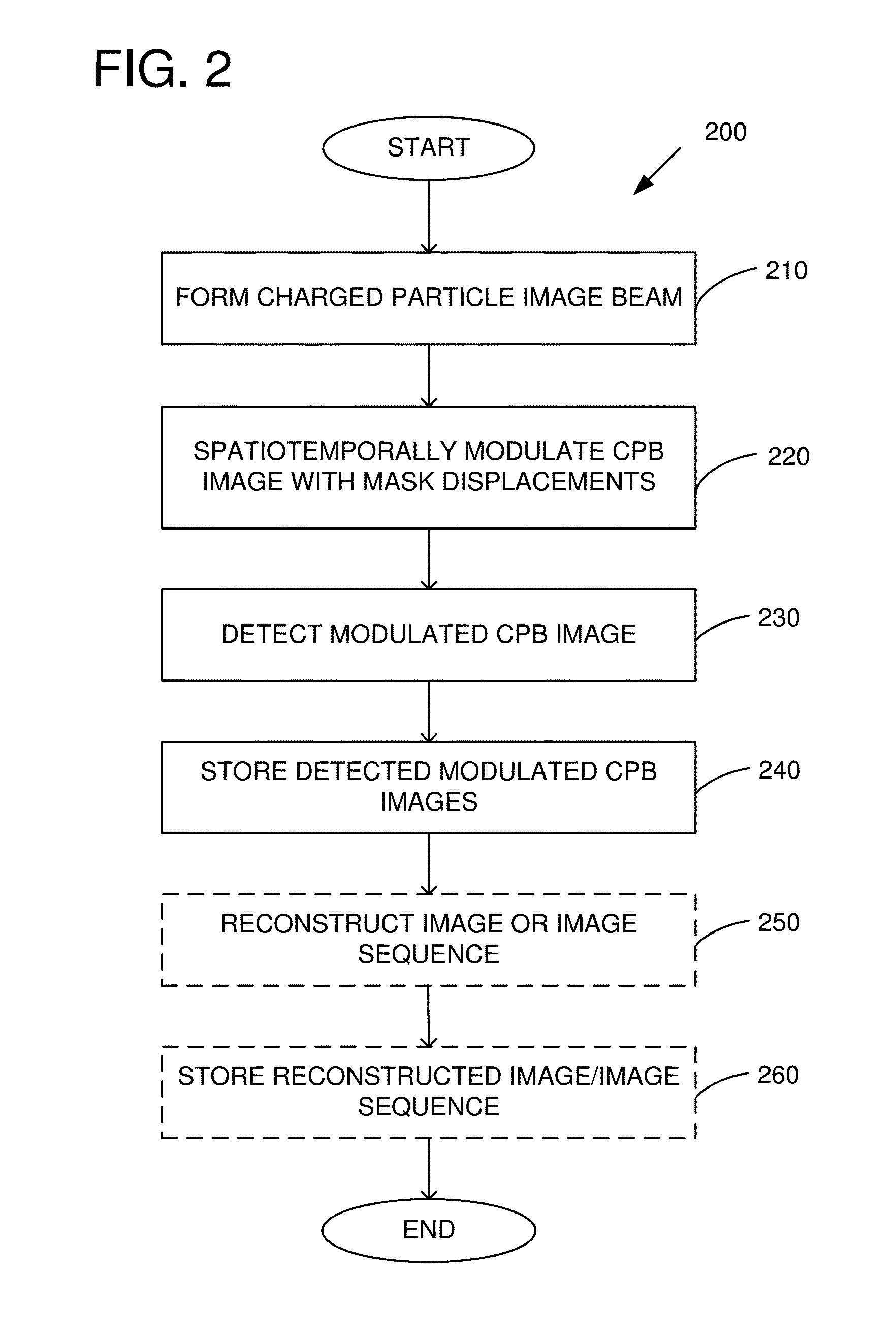Electron beam masks for compressive sensors
a technology of compressive sensor and electron beam, which is applied in the direction of microlithography exposure apparatus, electric discharge tube, diaphragm/collimeter handling, etc., can solve the problems of image read-out, many challenges associated with capturing dynamic processes with high temporal resolution,
- Summary
- Abstract
- Description
- Claims
- Application Information
AI Technical Summary
Benefits of technology
Problems solved by technology
Method used
Image
Examples
example 1
Charged Particle Beam Imaging System
[0060]FIG. 1 illustrates a representative charged particle beam (CPB) imaging system 100. It should be noted that FIG. 1 and the other Figures herein are provided for illustrative purposes and are not to proportion or to scale unless specifically noted as being to scale. The CPB imaging system 100 include a CPB column 105 for forming and transforming a charged particle beam that is directed toward a sensor array 170. The column 105 includes various CPB optical components, such as one or more of beam sources, lenses, apertures, deflection systems, alignment coils, blanking plates, scintillators, and stigmators. As shown in FIG. 1, the column 105 includes a beam source 110 that directs a beam toward sample that is retained by a sample receptacle 120. A modulator 130 is situated between the sample and the sensor array 170 so as to apply a modulation to a transmitted CPB image beam. The column 105 is generally coupled to a vacuum pump and one or more ...
example 2
Charged Particle Beam CS Methods
[0066]FIG. 2 illustrates an example method 200 for CPB imaging using CS. Such a method can be implemented using various CPB imaging systems such as, for example, the imaging system shown in FIG. 1. At 210, a charged particle (CP) image beam is formed by, for example, exposing a sample to a CPB such as an electron or ion beam. As a specific example, the CPB beam can be transmitted through the sample to form the CP image beam. Variations in intensity or phase in the CP image beam are associated with differences in structure and / or composition of the sample. At 220, the image beam can be spatiotemporally modulated using displacement of the CP image beam with respect to a mask. The CP image beam can be modulated in a variety of ways including by moving a mask with respect to the CP image beam and / or by moving or scanning the CP image beam relative to the aperture. As one example, the beam is modulated by mechanically moving the mask using a translation or...
example 3
Charged Particle Beam Microscopy System
[0072]A representative CPB microscopy system 300 using a stationary beam and a moving aperture is illustrated in FIG. 3. A CPB source 310 directs a CPB 315 to a specimen 320 so as to produce an image beam 325. A positioning stage 355 is coupled to a mask 350 that is scanned with respect to the image beam 325 to produce a mask-modulated image beam 340. A sensor array 370 receives the mask-modulated image beam 340 and integrates for a time duration established by a controller 380, or otherwise determined. Detected images are stored in a memory 390. For continuous detection of the modulated image beam, an integration time can be less than or equal to a frame time (a reciprocal of the frame rate). For example, one image can be collected while a previous captured image is scanned out of the sensor array 370.
[0073]The microscopy system 300 can include sensor arrays of various sizes and resolutions. For example the sensor array 370 can have an array 5...
PUM
| Property | Measurement | Unit |
|---|---|---|
| thickness | aaaaa | aaaaa |
| thickness | aaaaa | aaaaa |
| transmittance | aaaaa | aaaaa |
Abstract
Description
Claims
Application Information
 Login to View More
Login to View More - R&D
- Intellectual Property
- Life Sciences
- Materials
- Tech Scout
- Unparalleled Data Quality
- Higher Quality Content
- 60% Fewer Hallucinations
Browse by: Latest US Patents, China's latest patents, Technical Efficacy Thesaurus, Application Domain, Technology Topic, Popular Technical Reports.
© 2025 PatSnap. All rights reserved.Legal|Privacy policy|Modern Slavery Act Transparency Statement|Sitemap|About US| Contact US: help@patsnap.com



